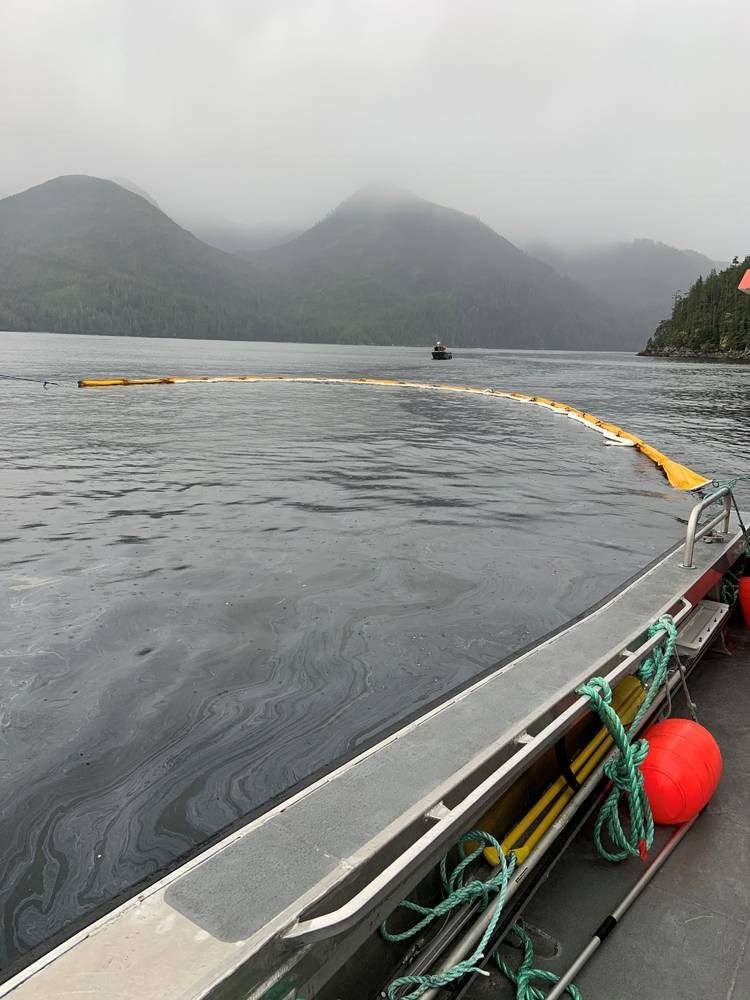Inspections by remotely operated underwater vehicles have discovered that oil is leaking out of several locations on a cargo ship which sank off Vancouver Island’s west coast in 1968.
Oil floating to the surface is heading south and southeast, Kiri Westnedge, of the Canadian Coast Guard’s incident command post, said Monday. This is confirmed by visual observation and tracking buoys.
“The size, spread and direction of the spill has been very consistent to date at 30 to 50 litres,” Westnedge said.
In early January 1968, the 483-foot cargo ship, MV Schiedyk, sank off Bligh Island in Nootka Sound after hitting an underwater shelf. All crew escaped and the captain stayed on board the Holland America Line ship until about 10 minutes before it sank, a Daily Colonist newspaper article from that time stated.
Oil leaked during the sinking, and it has been coming to the surface again in recent days. A boom was put on the water to collect fuel as government officials try to understand what is happening.
Pollution clean up has been going on since Dec. 6.
Protection booms have been set up around sensitive environmental and cultural sites, Westnedge said.
An oil sample has been sent for analysis. “This will give us a better understanding of the chemical characteristics of the specific type of fuel oil upwelling,” she said.
Historical documents state the ship was carrying diesel and bunker fuel.
About 40 personnel are at the site with a variety of equipment, from booms to vessels to skimming equipment.
Observations show oil is heading to the surface, rather than settling on the seabed. “There is a continuous but slow discharge of oil pollution emanating from the MV Schiedyk,” Westnedge said.
It is not clear how much oil was on the ship when it was grounded.
The remote vehicles were used to reach the ship, which is 360 to 400 feet below the surface, she said.
An evaluation of impact to marine wildlife is underway and results should be available in a few days.
Stephanie Hewson, a lawyer with the non-profit West Coast Environmental Law organization, said one concern is that there is a marine park in the area and the oil is inside that park.
Holland America representatives could not be reached Monday.
Transport Canada spokesperson Sau Sau Liu said that under international maritime law the ownership of a vessel, even if sunk, remains unchanged – in this case, Holland America. “Because this vessel sank in 1968, the owner’s liability is limited by a statute of limitation set out under the Marine Liability Act.”
The Marine Liability Act sets out the time frame to file claims against the Ship-Source Oil Pollution Fund. In this case, the fund can not be used because the incident falls outside the required time frame.
Transport Canada is monitoring the situation and providing support, Liu said.
This includes National Aerial Surveillance Program aircraft, used to monitor ships in Canadian waters, track ship activity, detect oil spills, and monitor endangered whales.



